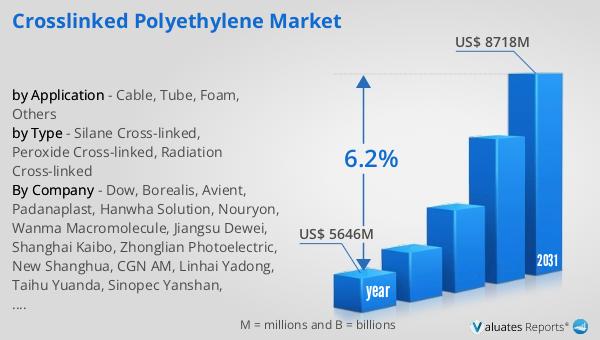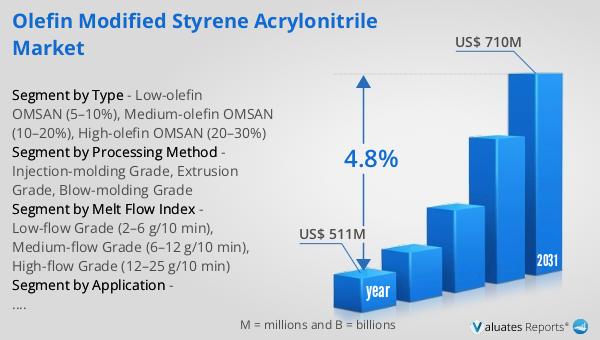What is Global Crosslinked Polyethylene Market?
The Global Crosslinked Polyethylene Market is a fascinating sector that delves into the world of high-performance polymers, specifically focusing on a type known as crosslinked polyethylene (PEX). This material is renowned for its superior properties, including enhanced strength, durability, and resistance to chemicals and high temperatures, compared to its non-crosslinked counterparts. Essentially, crosslinking is a process that bonds the polymer chains together, creating a three-dimensional network that significantly improves the material's performance. This market has seen a substantial uptick in demand due to these advantageous properties, finding applications across various industries such as plumbing, automotive, and electrical, to name a few. As of 2023, the market's value stood impressively at US$ 1315.9 million, with projections indicating a climb to US$ 2094.4 million by 2030. This growth trajectory, marked by a compound annual growth rate (CAGR) of 6.4% during the forecast period from 2024 to 2030, underscores the increasing reliance and preference for crosslinked polyethylene in both existing and emerging applications worldwide.

Silane Cross-linked, Peroxide Cross-linked, Radiation Cross-linked in the Global Crosslinked Polyethylene Market:
Diving into the specifics of the Global Crosslinked Polyethylene Market, it's essential to understand the three primary methods of crosslinking: Silane Cross-linked, Peroxide Cross-linked, and Radiation Cross-linked. Each method offers unique characteristics and benefits, making them suitable for different applications. Silane Cross-linked polyethylene (PEX-b) involves grafting silane groups onto the polymer chain and then exposing it to moisture, which facilitates crosslinking. This method is popular for its balance between performance and cost, making it a preferred choice for plumbing and underfloor heating systems. Peroxide Cross-linked polyethylene (PEX-a) uses organic peroxides to create free radicals, initiating the crosslinking process. This method produces the highest degree of crosslinking, which translates to superior thermal and mechanical properties, ideal for high-demand applications such as industrial piping and automotive parts. Lastly, Radiation Cross-linked polyethylene (PEX-c) employs electron beams or gamma radiation to achieve crosslinking. This method offers precise control over the degree of crosslinking, allowing for customization according to specific application needs. Despite the differences, all three methods enhance the polyethylene's performance, making it more resilient, durable, and versatile. The choice between them depends on the specific requirements of the application, including mechanical properties, environmental resistance, and cost considerations.
Cable, Tube, Foam, Others in the Global Crosslinked Polyethylene Market:
The usage of Global Crosslinked Polyethylene in various applications such as Cable, Tube, Foam, and Others, showcases its versatility and wide-ranging benefits. In the cable industry, crosslinked polyethylene is prized for its excellent electrical insulation properties, which are crucial for power cables, telecommunications cables, and wiring in high-temperature environments. Its ability to maintain performance over a wide temperature range and resist environmental stress makes it an ideal material for these applications. In tubing, crosslinked polyethylene's flexibility, durability, and resistance to chemicals and high temperatures are leveraged in plumbing systems, radiant heating, and cooling systems, as well as in the oil and gas sector for pipelines. This material's ability to withstand long-term stress and environmental conditions without degrading ensures reliability and longevity in these critical applications. Furthermore, in the realm of foam, crosslinked polyethylene's unique properties, including its thermal insulation, shock absorption, and water resistance, make it suitable for use in sports equipment, protective packaging, and automotive components. The "Others" category encompasses a broad range of applications, including medical devices, protective gear, and consumer goods, further underscoring the material's adaptability and the market's potential for growth across diverse sectors. The extensive application range of crosslinked polyethylene highlights its importance in modern manufacturing and construction, driving the market's expansion.
Global Crosslinked Polyethylene Market Outlook:
The market outlook for Global Crosslinked Polyethylene presents a promising future, with the market's value at US$ 1315.9 million in 2023, and an expected surge to US$ 2094.4 million by 2030. This growth, characterized by a compound annual growth rate (CAGR) of 6.4% during the forecast period from 2024 to 2030, reflects the increasing adoption and demand for crosslinked polyethylene across various industries. The material's superior properties, including enhanced durability, resistance to high temperatures and chemicals, and improved performance over non-crosslinked polyethylene, drive its preference for a wide range of applications. From plumbing and automotive to electrical and construction, the versatility and benefits of crosslinked polyethylene are increasingly recognized, fueling its market growth. This upward trend underscores the material's critical role in meeting the demands of modern applications and the market's potential for continued expansion in the coming years.
| Report Metric | Details |
| Report Name | Crosslinked Polyethylene Market |
| Accounted market size in 2023 | US$ 1315.9 million |
| Forecasted market size in 2030 | US$ 2094.4 million |
| CAGR | 6.4% |
| Base Year | 2023 |
| Forecasted years | 2024 - 2030 |
| Segment by Type |
|
| Segment by Application |
|
| Production by Region |
|
| Consumption by Region |
|
| By Company | DowDuPont, Borealis, Wanma MM, Polyone, UBE, Solvay, Jiangsu Dewei, Shanghai Kaibo, Zhonglian Photoelectric, New Shanghua, CGN AM, Original, Hangzhou New Materials, Linhai Yadong, AEI |
| Forecast units | USD million in value |
| Report coverage | Revenue and volume forecast, company share, competitive landscape, growth factors and trends |
